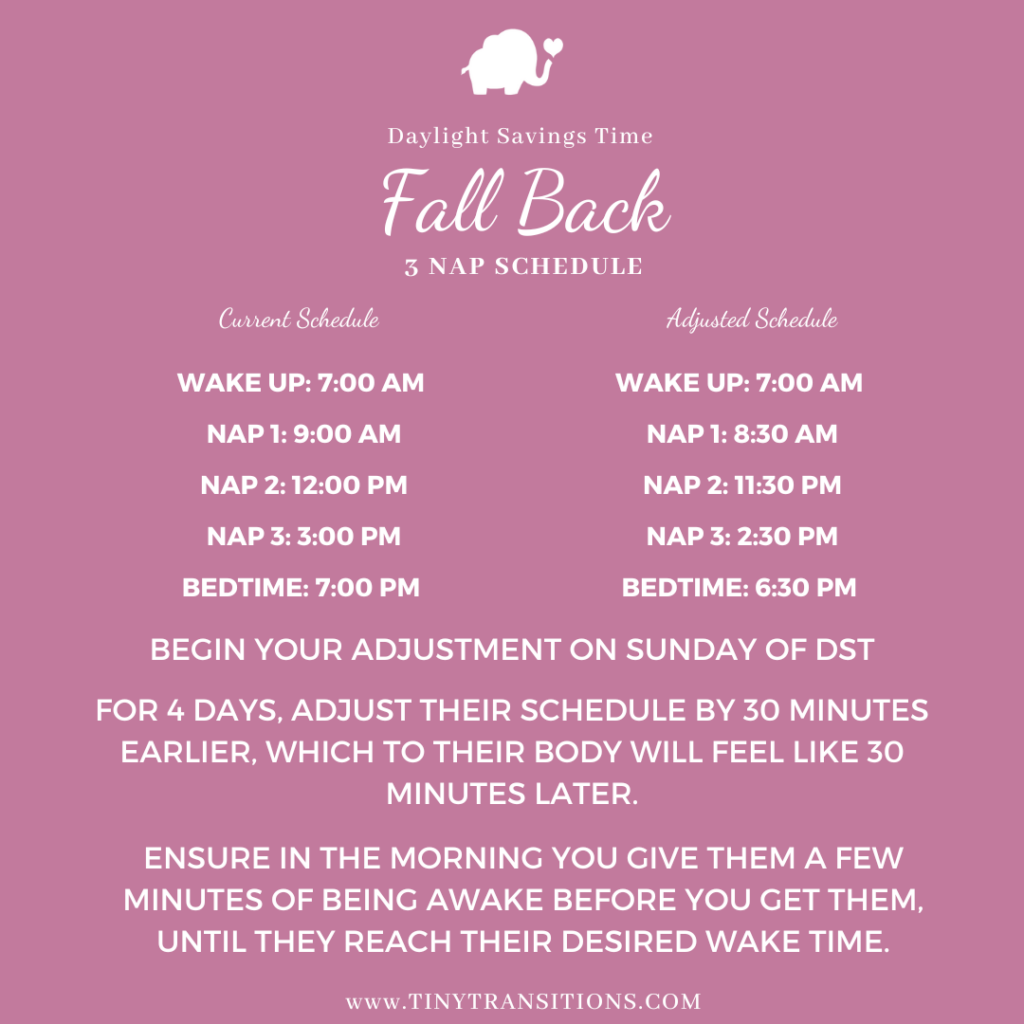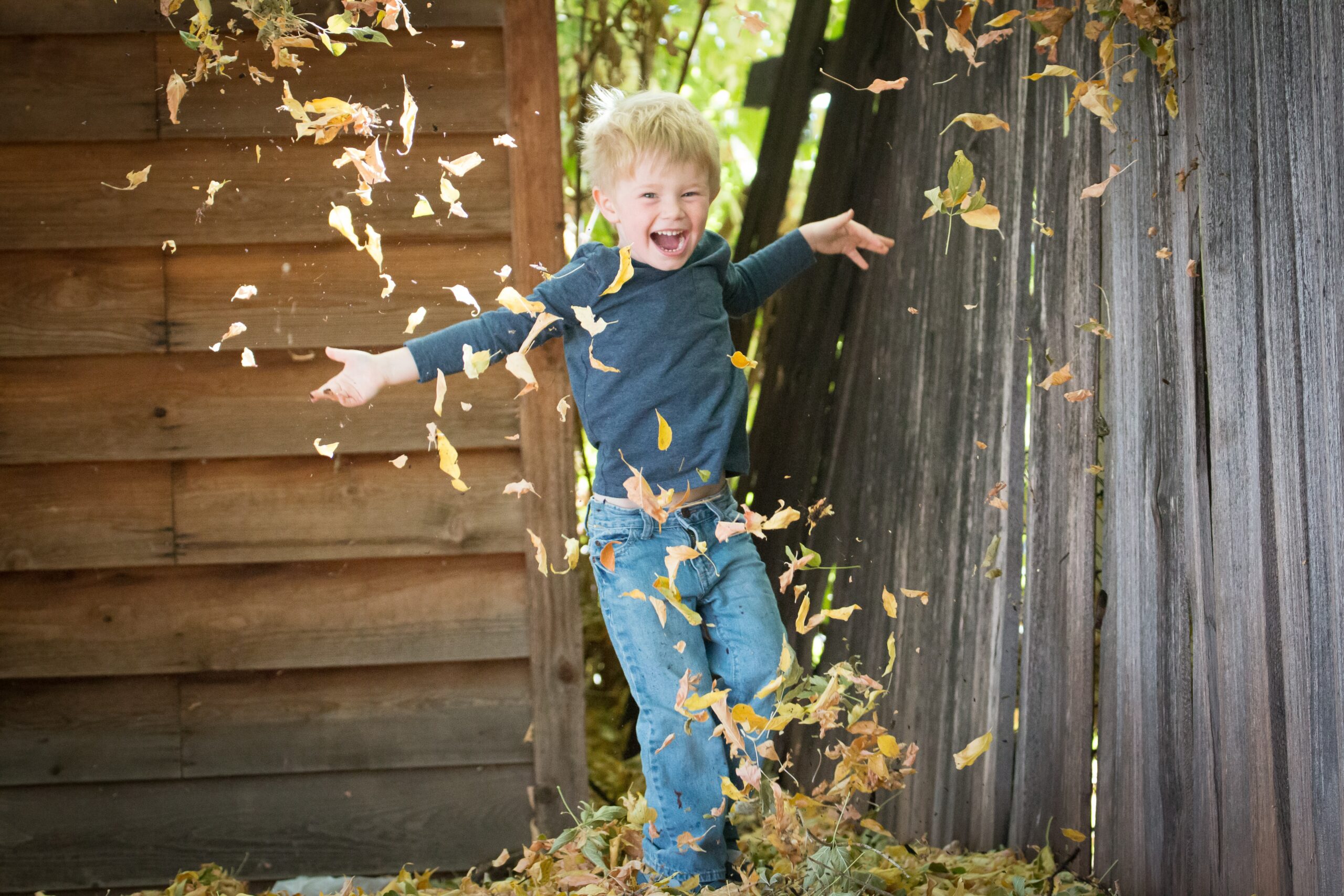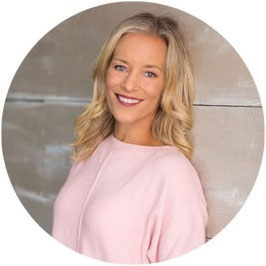It is the time of year that I am the least excited about darkness with having to turn back the clocks an hour for Daylight Savings. I was hopeful we would do away with it once and for all in our government, but we are not quite there yet. So, on November 5, 2023, it is time to “Fall Back” one hour.
Does daylight savings time affect a baby’s sleep?
This time change for littles makes them feel like they have to be awake another hour once they are ready to go to bed. Then on the other side of things in the morning, they are ready to wake an hour earlier when they are supposed to be “sleeping in” – because, let’s face it, I am about the only one in my neighborhood who likes being up at 5 am to start my day.
What age does daylight savings impact?
For little ones between 0-4 months old, you can adjust to the current time, monitoring your baby’s wake windows and adjusting to the new day. An immature body clock still developing a circadian rhythm isn’t impacted, and the awake time between sleep remains crucial.
For littles from 5 months to 5 years, you have three choices on adjusting for daylight savings that we dive into next, so you can find what works for your family.
When is it best to adjust my baby or toddler’s schedule for daylight savings, the week before or starting the day of?
As a Certified Pediatric Sleep Consultant, I field these questions on Instagram about 2,500 times twice a year – so I thought it best to explain both sides of the daylight savings adjusting so you can see what’s best for your family. You can start the week before, you start the day of or do nothing and keep your baby or toddler on a summer and winter sleep schedule. Let’s dive into what each looks like for your baby or toddler and what works best for your family dynamic.
Option #1: Starting the Week Before Fall-Back Daylight Savings
The Tuesday before Daylight Savings, which this year is Halloween, you start your day by waking them up 10 minutes later and adjusting the naps by following an age-appropriate awake window. Then, you put them to bed 10 minutes later, which is helpful this year because so many will be out trick-or-treating for a bit.
- Current Example Schedule for a 5-month-old: Wake at 6:00 am, three naps, with an awake window of 2.5 hours and bedtime of 7:00 pm.
- Example schedule on Halloween Night {Day 1}: Wake at 6:10 am, three naps, with an awake window of 2.5 hours and bedtime of 7:10 pm.
Then, each night after this, you adjust another 10 minutes until Sunday, November 5th, 2023, you are all set with the Daylight Savings Fall Back. This method will slowly and easily shift your littles clock so you are all adjusted.
Option #2: Starting the Day of Fall-Back Daylight Savings
On Sunday, November 5th, you wake up. The clock says 7:00 a.m., but now it’s 6:00 a.m. After you pour a cup of coffee, it’s time to hit the house and reset all the clocks while everyone else is chilling. Once that’s sorted, you have to deal with schedule adjustments and ensure the littles don’t get overtired based on their age and current nap schedules.
We will adjust your littles to their new sleep and awake schedule for the next four days by splitting the difference between the old and new times. This approach balances them getting overtired and ensures they can adjust appropriately to the new time without too much sleep disruption.
Sample Daylight Savings Sleep Schedule Adjustment when starting on the ‘day of’ daylight savings:

You will do this for the next four days, and then by Thursday, November 9th, you can go back to a bedtime of 7:00 p.m. Each child is different, based on their age, naps, and activity level during the day, so remember, avoid overtired, and watch their sleep cues; it is better to get them down before they are overtired vs. not.
*Note for Toddlers/School-aged children: If you have a toddler or an older child who relies on a clock to know when their “morning time” has arrived, set the clock one half-hour ahead of the new time so that it reads 7:00 a.m. at the new time of 6:30 a.m. Allow your child to wake a bit earlier than normal (they will think it is 7:00 according to the clock, but it will be 6:30 a.m., new time). This will only be temporary as your child adjusts to wake at their usual 7:00 a.m. time after about one or two weeks.
Option 3: Do Nothing for Fall Back Daylight Savings
Some families over the ten years I have been a baby sleep coach prefer to do nothing to adjust the clocks. They let nature do it’s thing and keep their kids on the schedule they are on. What does this mean?
For children before the time change that are on a wake time of 7:00 am and a bedtime of 8:00 pm, they simply follow the clock and after the time change, adjust to a wake of 6:00 am and a bedtime of 7:00 pm.
There are many ways to support a child who is adjusting, so you have to do what’s best for your family and your schedule.
Remember, help is here if you need it with our team of Sleep Consultants
If you have made the adjustments and are still seeing sleep disruptions, a sleep regression, or some new habits creeping in, and you need help, we are here and have two ways to get coaching directly with a member of the Tiny Transitions Team.
- The Sleep Steps Membership: The only baby and toddler sleep consulting program on the market that provides a complete course curriculum, live coaching weekly in Zoom calls, and daily chat threads, all for just $97 a month. Come for better sleep, stay for the community. Check out Sleep Steps here to see if it’s the right sleep training program for your family.
- Private Sleep Coaching with a Member of Our Team: Book a Private Mini-Session for 30 or 60 minutes with a Certified Sleep Consultant on the Tiny Transitions Team, or if you need a complete sleep overhaul, book one of our comprehensive packages. We always suggest you start with a complimentary assessment call, as we never want you to book the wrong thing or book something excessive when you just might need a little tweak. Get started with that here.
Courtney Zentz is an Award-Winning Author, Baby Sleep Expert, and Founder of Tiny Transitions. Her background as a Pediatric Sleep Specialist, Lactation Counselor, Postpartum Doula, and Sleep Coach to her team of Sleep Consultants around the world provides parents with a solution to their sleep struggles that is backed by science and balanced with your love and support. The mission of Tiny Transitions is to teach healthy sleep hygiene and parenting education to parents and their babies, toddlers, and young adults who struggle to sleep through private sleep consultations and corporate speaking engagements to support everyone being the best version of themselves. Named by Tuck as a Top 200 Sleep Professional in the United States, Courtney is a 4x “Best of Philadelphia” Sleep Consultant. She is on the Pediatric Sleep Council at Purple and writes & contributes to NBC, Fatherly, Yahoo, Thrive Global, Medium, Romper, Parentology, The Sleep Sense Show, and Bustle, among others in the field of Pediatric Sleep.
Courtney hosts The Kids Sleep Show podcast and is a frequent guest with companies like Slumber Pod® and The Magic Sleep Suit® Company. Courtney resides just outside Philadelphia with her husband, Adam and two children, Max and Sovella. She has always felt passionate about making sleep & healthy living a priority in her family’s life and Tiny Transitions looks forward to working with you. Set up a Free Preliminary Sleep Evaluation with Courtney or a member of her Slumber Squad®.


